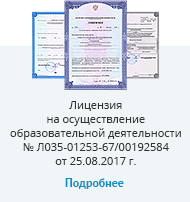

СДЕЛАЙТЕ СВОИ УРОКИ ЕЩЁ ЭФФЕКТИВНЕЕ, А ЖИЗНЬ СВОБОДНЕЕ
Благодаря готовым учебным материалам для работы в классе и дистанционно
Скидки до 50 % на комплекты
только до 02.08.2025
Готовые ключевые этапы урока всегда будут у вас под рукой
Организационный момент
Проверка знаний
Объяснение материала
Закрепление изученного
Итоги урока

Type 2 Diabetes: Beyond the Basics
Chances are good that you know someone who has T2D already. About 1 out of 10 people in the US have this medical condition, and nearly 1 in 3 have prediabetes. Type 2 diabetes is a metabolic disease that causes blood sugar spikes – either the body isn’t able to make enough insulin or is unable to use it.
The prevalence of diabetes has increased around the globe, driven, in part, by increasing levels of obesity and sedentary lifestyles. In the past, T2D was referred to as adult-onset diabetes because it mostly occurred in adults. Today, however, it’s also increasingly being diagnosed in young adults and children.
Fortunately, type 2 diabetes can be managed with regular blood glucose monitoring, lifestyle changes, and medications that help lower blood glucose levels.
What are the symptoms of T2D?
Many people with T2D do not experience any symptoms at first, and it may go undiagnosed for years. However, symptoms may include:
-
Increased urination
-
Waking up at night to urinate
-
Increased appetite and hunger
-
Recent unintentional weight loss
-
Blurred vision
-
Increased thirst
-
Feeling tired
-
Weakness
-
Numbness or tingling sensation in hands or feet
-
Frequent infections, such as foot ulcers that heal slowly
What are the risk factors of T2D?
Risk factors for type 2 diabetes (T2D) include:
-
Obesity
-
Prediabetes
-
High blood pressure
-
Smoking
-
Metabolic syndrome
-
Polycystic ovary syndrome (PCOS)
-
Family history of type 2 diabetes in a sibling or parent
-
Age (more common in adults over age 45)
-
Physical inactivity and sedentary lifestyle
-
Having had gestational diabetes mellitus
-
History of heart attack or heart failure
-
Diet, consuming processed red meat and sugary beverages, as well as low consumption of fibre
-
Certain medications, including thiazide diuretics, atypical antipsychotics and glucocorticoids
-
Exposure to certain toxins, including pesticides, arsenic and bisphenol A (BPA)
-
Low level of good (HDL) cholesterol and high triglyceride levels (TGL)
What are some potential complications of T2D?
People with type 2 diabetes are at increased risk of developing some medical complications, including:
-
Stroke
-
Chronic kidney disease (CKD)
-
Peripheral neuropathy
-
Heart disease
-
Peripheral vascular disease
-
Diabetic ketoacidosis (DKA)
-
Foot problems (ulcers, infections, gangrene)
-
Eye and vision problems, including diabetic retinopathy, glaucoma and diabetic macular oedema
How is T2D treated?
The treatment options for managing T2D aims to keep blood glucose levels within a healthy range. Keeping the blood sugar level under control helps alleviate symptoms and lower the chances of developing complications.
Some popular treatment options include:
Lifestyle changes: These include exercising regularly and following a healthy diet. People who smoke should quit smoking, those who are obese should manage their weight, and who drink alcohol should avoid excessive consumption.
Medications: Different types of medicines are available for treating type 2 diabetes. They belong to the medication class of Meglitinides, Sulfonylureas, Dipeptidyl-peptidase 4 (DPP-4) inhibitors, Biguanides, Thiazolidinediones, Alpha-glucosidase inhibitors, Sodium-glucose transporter 2 (SGLT2) inhibitors, Bile acid sequestrants and so on.
Some commonly used medicines for type 2 diabetes management are:
Jardiance Tablet: Containing Empagliflozin 10 mg
Glimisave 1 Tablet: Containing Glimepiride 1 mg
: Containing Semaglutide 7 mg
Monitoring: Regular blood glucose monitoring is recommended for people suffering from T2D. This typically involves a finger stick that helps prick blood with a lancet and a blood glucose monitoring device. In some cases, a continuous monitoring device that measures glucose levels throughout the day may be inserted under the skin. In some cases, periodic A1C tests and other blood tests are usually necessary.
Takeaways
After being diagnosed, managing type 2 diabetes involves continuous monitoring, treatment, and lifestyle adjustments. The well-being of individuals with type 2 diabetes is greatly influenced by how effectively they control their blood sugar levels.
Type 2 diabetes advances gradually and can result in severe complications. Generally, individuals with type 2 diabetes can enhance their quality of life and prevent or slow down the onset of complications by maintaining physical activity, adhering to a nutritious diet, managing their body weight, following prescribed medications, and monitoring their blood sugar levels as advised by their healthcare provider. Regular checkups with a diabetes specialist and an eye doctor are also essential for monitoring any arising complications and receiving appropriate treatment.











